The Samsung QN95D immediately made a great impression on us. Right from the start, we felt that the Tizen system is intuitive and quick. The fast access to streaming applications such as PrimeVideo, Netflix, and MAX, as well as the ability to integrate with the SmartThings ecosystem, makes using the television simply convenient. The solar remote is a clever solution – eco-friendly and practical, as it allows control of other devices, such as a decoder (e.g. Canal+) or soundbar. While watching films and series, we quickly noticed how much of a difference the MiniLED technology makes. Thanks to the precisely functioning backlight zones, the picture gained incredible depth - which was confirmed by our contrast tests. The blacks are truly deep, and bright scenes using HDR stand out with excellent detail despite the lack of Dolby Vision. Additionally, the high brightness combined with the anti-reflective coating allows for comfortable viewing even in a sunlit room. When we played on this television, we immediately appreciated the low input lag and the fluidity of the image. The 144 Hz panel and support for HDMI 2.1 guaranteed dynamic and responsive gameplay, regardless of the game. All these features made every gaming session pure pleasure, especially in dynamic titles where precision and lack of delays matter. In terms of design - which is worth mentioning for this television - the QN95D simply looks great. The slim housing, solid central stand, and Ambient Mode function, which allows the screen to blend into the room's decor, give it an elegant touch. The included camera is an interesting addition that can be useful during video calls or when using interactive applications – like personal training through the Daily+ tab. However, for such, let’s be honest, an expensive piece of equipment, there are a few downsides. The lack of a recording function and support for sound in DTS:X format may be a problem for users seeking this feature. Nevertheless, the Samsung QN95D is a television that combines exceptional picture quality, functionality, and elegant design. The MiniLED backlighting makes a real difference here, especially if we care about deep blacks, high contrast, and excellent brightness. This is a device that will perform well during movie screenings, dynamic gaming, and everyday television watching.
- Matching (Score)
- Our verdict
- TV appearance
- Where to buy
- Contrast and black detail
- HDR effect quality
- Factory color reproduction
- Color reproduction after calibration
- Smoothness of tonal transitions
- Image scaling and smoothness of tonal transitions
- Blur and motion smoothness
- Console compatibility and gaming features
- Input lag
- Compatibility with PC
- Viewing angles
- TV efficiency during daytime
- Details about the matrix
- TV features
- Apps
- Playing files from USB
- Sound
Samsung Neo QLED QN95D vs SAMSUNG OLED S95F (QD-OLED)
Direct compare
Neo QLED / QN95
S95F / FAT / FAE

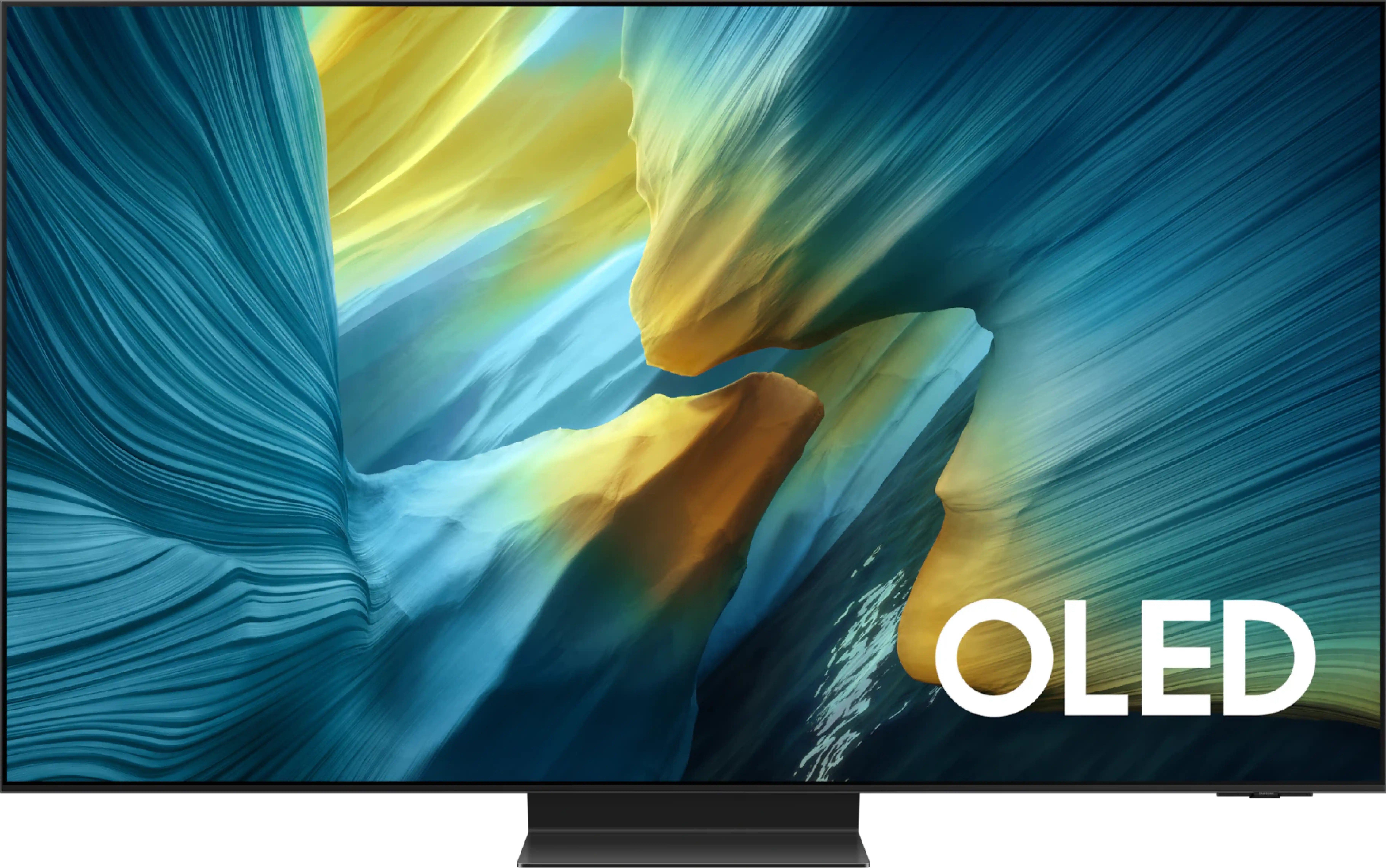
Panel type: LCD VA (wide viewing angle)
Resolution: 3840x2160
System: Tizen
Model year: 2024
Complete the survey to find out the result

Panel type: QD-OLED
Resolution: 3840x2160
System: Tizen
Model year: 2025
Complete the survey to find out the result

Overall rating
7.8
8.7
Movies and series in UHD quality
8.0
9.3
Classic TV, YouTube
8.1
9.3
Sports broadcasts (TV and apps)
7.7
8.9
Gaming on console
9.2
9.9
TV as a computer monitor
8.6
8.8
Watching in bright light
6.5
7.1
Utility functions
6.7
7.9
Apps
9.1
8.7
Sound quality
7.0
8.0
Complete the survey to find out what fits your preferences
Advantages
Excellent brightness - great for HDR content
Very good contrast
Wonderful choice for gamers (HDMI 2.1 4K@144Hz, low input lag)
Wide viewing angles - unusual for this type of panel
Modern design
Camera included
Perfect black and excellent contrast
High image brightness
Amazing image quality after calibration
Ultra-fast QD-OLED 165 Hz panel
The best choice for gamers – full support for HDMI 2.1, VRR, ALLM, and HGiG, input lag of just 5 ms (highest rating on the portal!)
Best reflection suppression thanks to the matte screen finish
Wide viewing angles without loss of quality – top level thanks to the QD-OLED panel
Intuitive and fast Tizen operating system with a rich set of features
Modern and elegant design
The One Connect module makes it easy to aesthetically hide cables
Disadvantages
No recording support
No DTS format support - may pose a problem for Blu-ray users
No support for DTS:X (home cinema)
No recording to USB from built-in tuners
Cherry black effect in very difficult lighting conditions
Our verdict
Samsung S95F is an excellent continuation and simultaneously an enhancement of last year's model S95D. Thanks to the QD-OLED panel, we receive an image that impresses from the first minutes of viewing. The black is deep and natural, with no signs of backlighting, and the brightness of the new generation panel reaches levels that just recently seemed beyond the reach of OLEDs. These values are so high that the S95F can confidently be compared with the best Mini-LED screens - both in terms of HDR effect and in everyday use under strong daylight. After a slight adjustment of the settings, the television can offer a reference image, creating a cohesive and cinematic experience. However, it's not just a screen for movie buffs but also one of the absolute favourites for gamers. The 165 Hz panel with lightning-fast response, input lag of just a few milliseconds, a full package of gaming features - including VRR, ALLM, and exceptionally implemented HGiG - along with four HDMI 2.1 ports, make the S95F effortlessly meet the demands of both next-gen console owners and PC gamers. This complete set of possibilities makes the S95F one of the best gaming televisions on the market. Samsung has also taken care of user-friendly details. The matte screen coating effectively eliminates reflections, ensuring that even in a bright living room, the image remains clear and comfortable. The One Connect module organizes the cabling, moving all the connections to a separate box, which will be appreciated by anyone who likes to regularly juggle connected devices. The design of the television is slim, elegant, and thoughtful – it is evident that this is a Super Premium class product that looks great in any interior. Of course, like any equipment, the S95F has its minor compromises, but given its class and completeness, it's easy to forget about them.
This is a television that combines the best picture quality with functionality and user comfort. Undoubtedly, it stands up to the strongest competition and can be confidently regarded as one of the main contenders for the title of television of the year 2025.
TV appearance




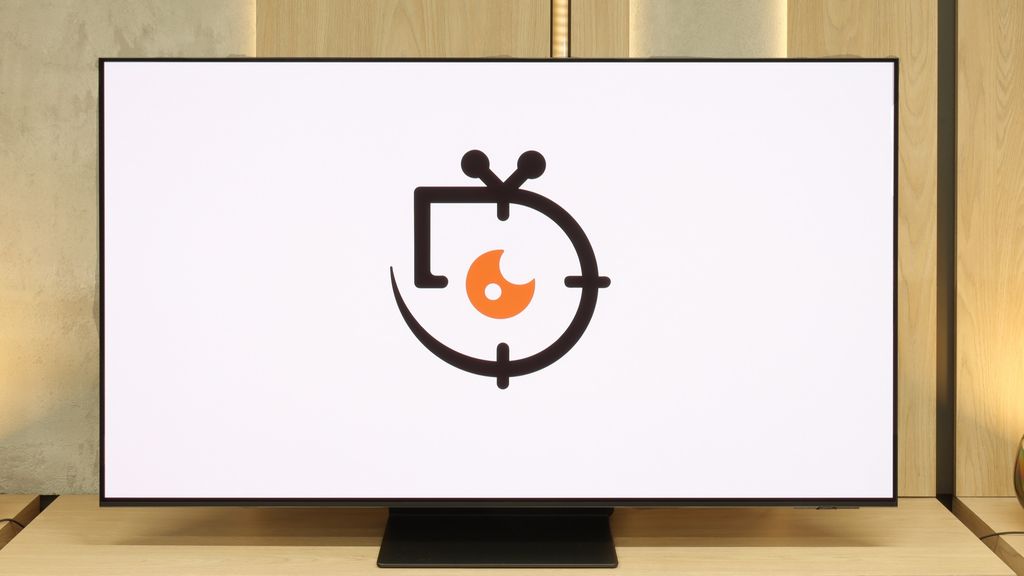
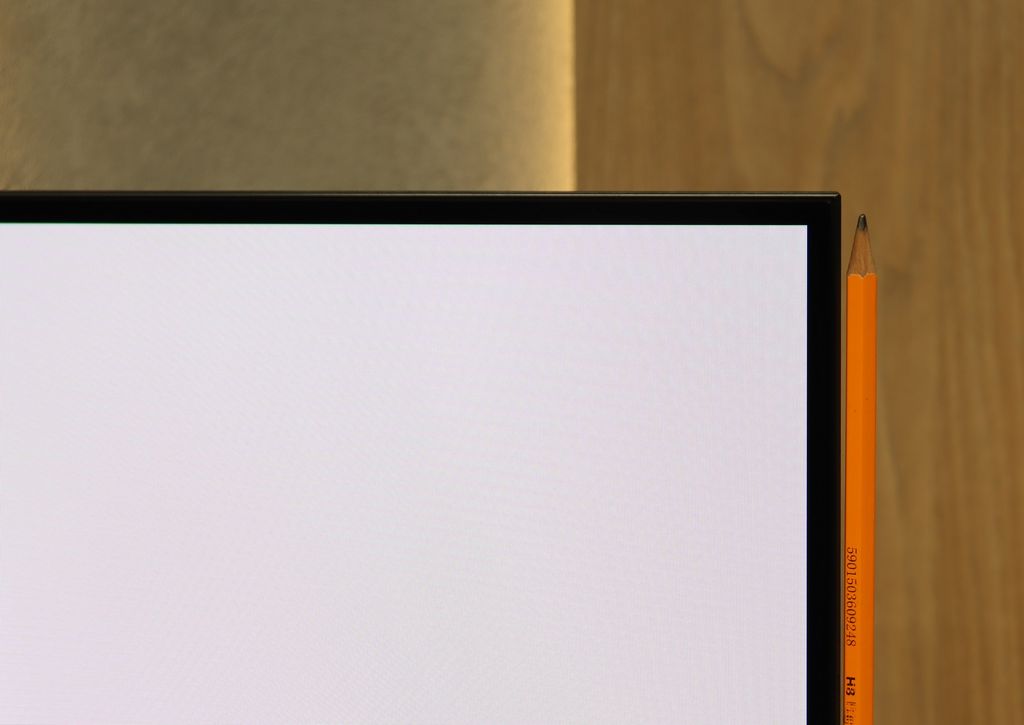
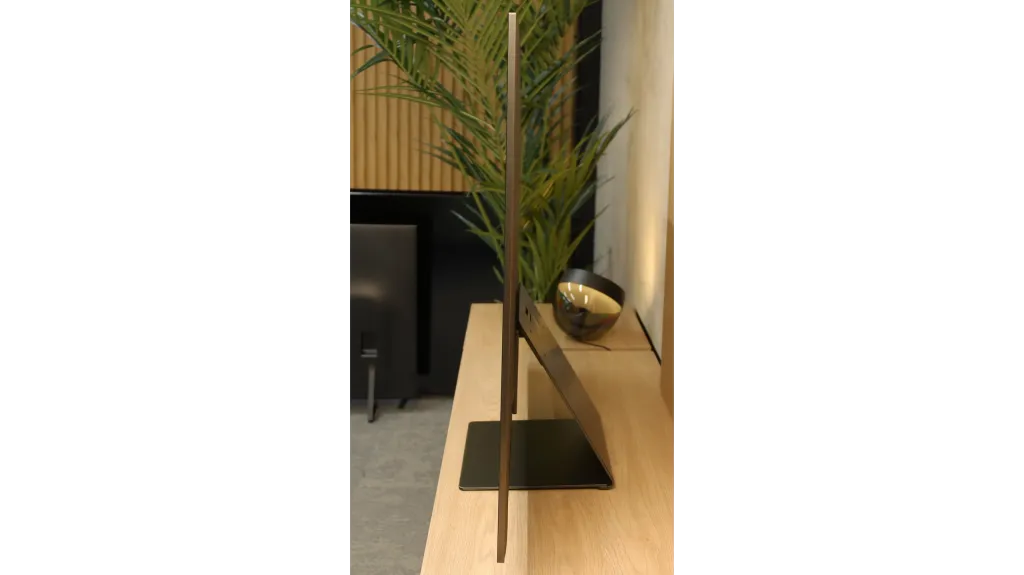
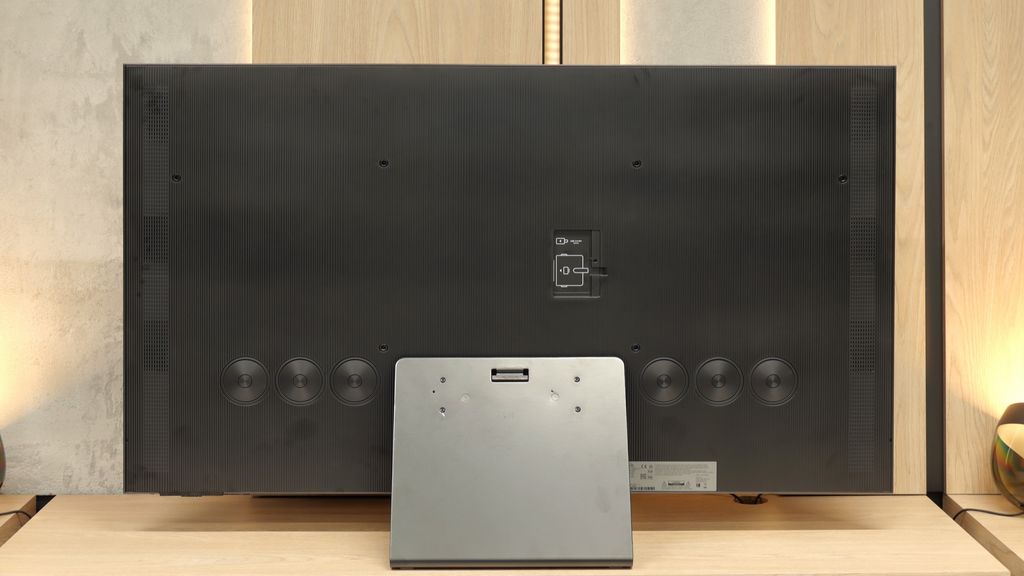
Contrast and black detail
8.3/10
10/10
Local dimming function: Yes, number of zones: 1344 (24 x 56)
Contrast:

Result
∞:1

Result
218,000:1

Result
61,000:1

Result
10,500:1

Result
4,900:1

Result
∞:1

Result
∞:1

Result
∞:1

Result
∞:1

Result
∞:1
Halo effect and black detail visibility:

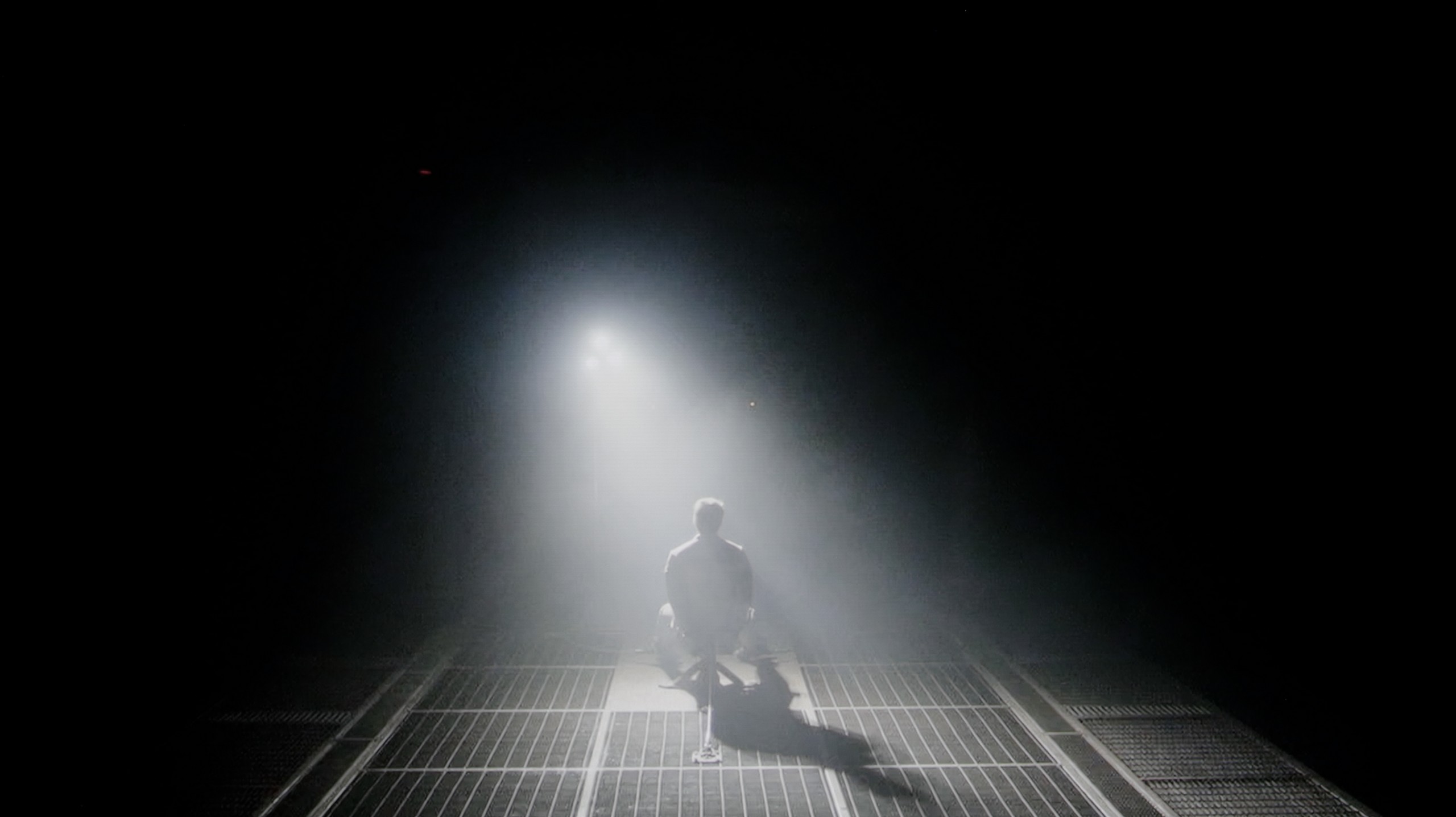
Samsung QN95D is a television that certainly attracts attention thanks to the use of a VA panel and innovative Mini LED backlighting. This model stands out with an impressive number of 1344 local dimming zones, achieving an exceptional level of contrast and black depth. It is worth noting that the number of backlighting zones may vary depending on the screen size – in larger models, these zones naturally increase, allowing for even better performance in terms of contrast and black levels. Mini LED, with smaller diodes, enables more precise control of backlighting, significantly enhancing the quality of the displayed image. The tested 55-inch model handles detail reproduction excellently, and its ability to adjust brightness in different parts of the screen results in a phenomenal visual effect. During our tests, Samsung QN95D on the test pattern from the film "Oblivion" surprised us with results that could compete with OLED televisions, offering nearly reference-level contrast. However, how does the television perform in more challenging conditions? In more demanding scenes, the local dimming algorithm may show some flaws. In some cases, on dark backgrounds, smaller bright elements may lose a lot of brightness, which we noticed during tests with the Pioneer Kuro test disc. Additionally, when we take a closer look (e.g. a scene from the film Sicario 2), some imperfections can be observed. The television sometimes struggles with brightness optimisation – in some scenes, it dims elements too much, while in others, it brightens the screen too intensely. These phenomena can be noticeable enough to capture the viewer's attention, especially in demanding night scenes. However, if we do not pay much attention to the mentioned imperfections, Samsung QN95D proves to be one of the best choices in terms of black depth among displays with MiniLED technology.
The Samsung S95F with a QD-OLED panel demonstrates that when it comes to blacks and contrast, it's hard to find anything better. Even the first test scenes prove that this television can achieve absolute black, while flawlessly reproducing even the tiniest points of light. The effect is stunning – a star-filled sky looks as if it has been taken directly from an observatory, and the cinematic shadows gain depth and drama. Details in the shadows are preserved with reference-level accuracy, making the experience of watching cinema at home take on a new dimension.
HDR effect quality
6.7/10
8.7/10
Luminance measurements in HDR:

Result
1798 nit

Result
542 nit

Result
805 nit

Result
269 nit

Result
1528 nit

Result
2044 nit

Result
2159 nit

Result
2167 nit

Result
2180 nit

Result
1427 nit
Scene from the movie “Pan” (about 2800 nits)


Scene from the movie “Billy Lynn” (about 1100 nits)


Static HDR10


Dynamic: HDR10+
Dynamic: HDR10+


HDR luminance chart:
SAMSUNG OLED S95F (QD-OLED)
HDR luminance
Samsung Neo QLED QN95D
HDR luminance
Samsung QN95D handles HDR exceptionally well, achieving a peak brightness of around 2000 nits. In the tested movie scenes, where the screen is fully lit, the television provides intense and realistic representation of HDR content, significantly enhancing the visual experience. Nevertheless, similar to contrast, the dimming algorithm may sometimes show limitations. Despite the considerable number of Mini LED zones, the television does not surprise the user with incredible brightness. For instance, in scenes from the film "Life of Pi," where a bright moon appears against a dark background, and in excerpts from "Sicario 2," where a strong light effect occurs on a dark background, the television displays very poor results. At such moments, the television attempts to reduce the halo effect by darkening the image to a level reminiscent of SDR quality. As a result, blacks appear deep and uniform, but this comes at the cost of losing some detail in bright areas. It is a compromise aimed at maintaining the best possible quality of black, although it simultaneously causes the image to lose a bit of its dynamism. Despite certain flaws in the operation of the local dimming algorithm, this television deserves praise for its wide coverage of the DCI-P3 colour gamut. This is made possible by the use of a quantum dot coating, also known as QLED technology, which allows for vibrant and rich colours.
The new generation of QD-OLED matrices in the Samsung S95F shows its full potential, with brightness results that are truly stunning. In test film scenes like "Life of Pi" or "Sicario 2," where smaller light elements appear – stars, the moon, or headlights – the television managed to achieve over 2000 nits of brightness. This is a result that surpasses even most top-of-the-range Mini-LED models.
The secret lies in the technology itself – instead of a limited number of dimming zones like in Mini-LED televisions, here we have millions of emitting pixels, allowing the television to fully showcase its power without technological compromises. Of course, as this is still an organic panel, in full-screen scenes flooded with white – like in the final sequence of the film The Meg – the brightness drops to around 1400 nits. Nevertheless, the result remains excellent and clearly exceeds what any OLEDs, both QD-OLED and WOLED, have offered so far. The colour reproduction is also particularly noteworthy. Thanks to QD-OLED technology, the television achieves nearly 100% coverage of the DCI-P3 colour space and about 80% in BT.2020. These values make HDR images not only dazzling in brightness but also captivating in the richness of colours.
Factory color reproduction
5.9/10
6/10


Factory Mode
After calibration


Factory Mode
After calibration
In the category of factory colour reproduction, the television Samsung QN95D was tested in Filmmaker mode, which offers the best settings from the manufacturer. Nevertheless, it is not entirely free from flaws. In the case of HD content, there is a noticeable colour deviation, particularly in white balance, where the red colour clearly dominates the graph. The situation improves with 4K HDR content; however, there are still significant drops in blue colour reproduction. These effects can be observed in a scene from the film "Star Wars," where the protagonist is depicted in overly warm tones.
As for contrast, we can observe an initial large jump on the gamma graph, indicating that the television effectively highlights the brighter parts of the image. However, at the end of the graph, we notice a distinct drop, which may mean that in darker tones, details can be lost. Such a shape of the gamma curve can affect the way users perceive dark scenes, where some details may become too blurred or too dark, causing the image to lose clarity. It is also worth noting the curve responsible for brightness (EOTF), which is quite correct, except for the initial drop.
Although Samsung QN95D boasts impressive parameters and advanced technologies to deserve the title of one of the best televisions on the market, it requires certain adjustments in colour reproduction and contrast to fully utilise its potential.
The best picture mode straight out of the box is undoubtedly Filmmaker Mode – a mode that Samsung has been using for several years, designed to faithfully convey the creators' intent. In SDR content, its implementation is not bad, although some imperfections can be observed. The image is slightly dimmed, and the screen has a subtle pinkish tint due to the dominance of red and blue in the white balance. Colour errors were maintained at a level of 3–4 ΔE units – and for those who are not familiar: a value above 3 is the threshold at which the average human eye starts to notice differences.
However, much greater problems arise in HDR content. Here, the white balance was not such a significant issue – a slight excess of blue did not significantly hinder the viewing experience. The problem became managing brightness. In practice, the television "blasted" the image too much, causing details in the blacks to completely disappear. The final effect was far from expected, and colour errors in this mode became quite pronounced. It's hard to say why such a design decision was made, but it was evident that the factory HDR settings did not allow this television to showcase its full capabilities.
Color reproduction after calibration
8.9/10
9.4/10




After calibration, the picture on the Samsung QN95D television achieves truly impressive results. The white balance is perfectly aligned, and error readings rarely exceed 2, which means that colours are displayed very accurately. Most samples from the Color Checker test fall within an acceptable error range, confirming that the television reproduces hues excellently. The contrast has also improved significantly, and the gamma curve is more stable, resulting in better visibility of details in both dark and bright scenes. However, it is worth noting the EOTF (Electro-Optical Transfer Function) curve, which shows some discrepancies in film tests. Although the television performs well in most scenes, details in the blacks can still be lost in more extreme cases – this is due to an aggressive dimming algorithm.
Nevertheless, these minor imperfections do not detract from the overall picture quality. After calibration, the Samsung QN95D impresses with its visual quality, offering an exceptional experience that will certainly satisfy anyone looking for a top-tier television.
After calibration, it was possible to make subtle adjustments to the white balance and significantly improve the image characteristics. In SDR content, the quality has become practically reference-level – most colour errors have fallen below a ΔE value of 1, which is the level at which the human eye can no longer discern differences. This is a result that places the S95F among the very best televisions available on the market.
In HDR materials, the calibration also brought about a significant improvement. The television's tendency to blow out highlights has been brought under control, as confirmed by the analysis of the EOTF curve. A slight tendency to brighten the entire scene or occasional loss of detail in blacks can still be observed, but this does not significantly affect the overall perception. After calibration, the S95F reveals its full potential and can be described as one of the best televisions on the market!
Smoothness of tonal transitions
9.1/10
8.9/10





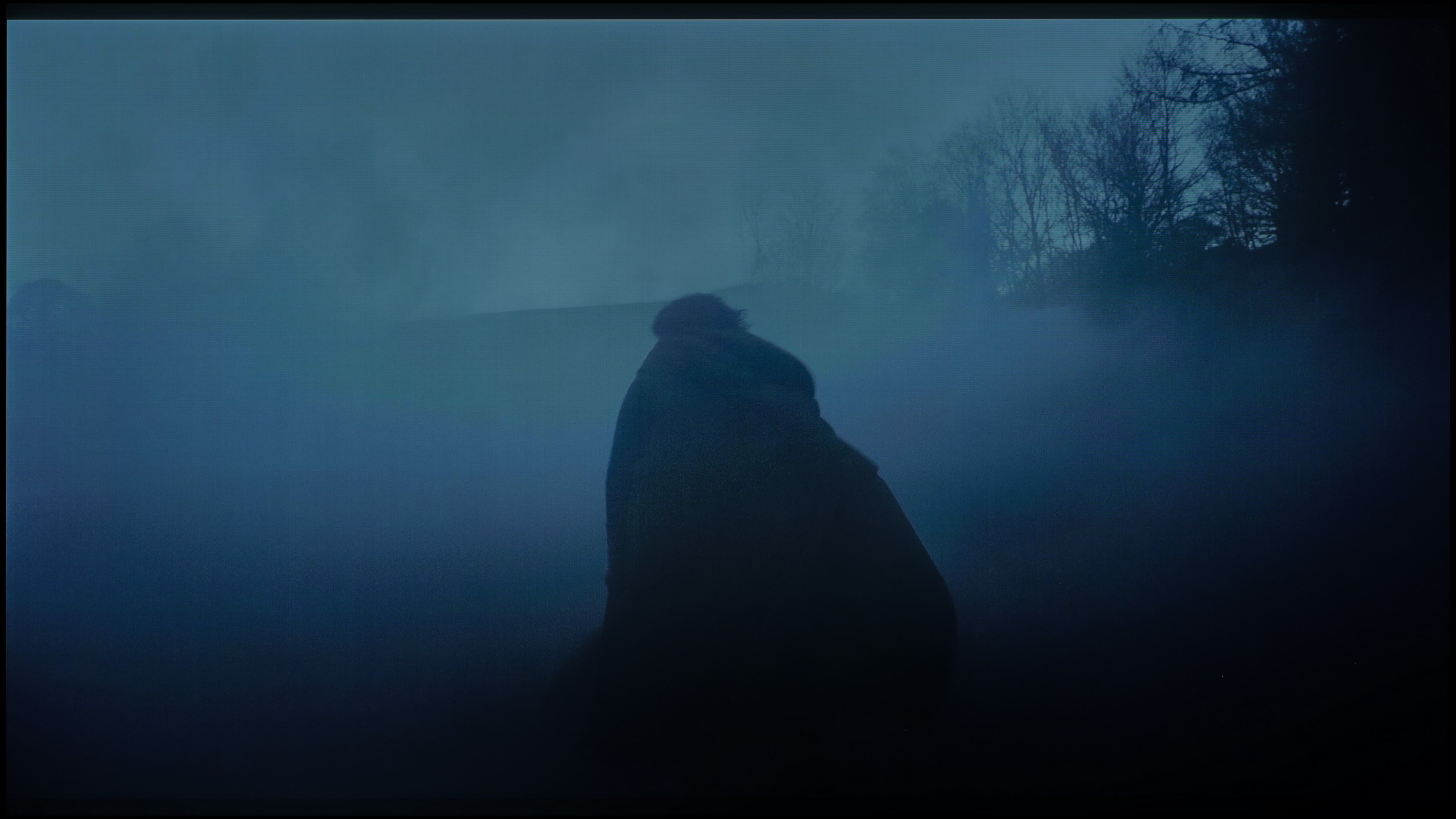






The fluidity of tonal transitions is one of the strongest points of the Samsung QN95D television, which received a very high rating in this category. Such results are rarely seen in televisions that offer such high brightness. Thanks to the precise operation of the panel, tonal transitions are exceptionally smooth and natural. The only noticeable shortcomings might be slight errors around the blacks, but they are subtle enough that most users are unlikely to notice them. This makes the Samsung QN95D an excellent choice for those who value image quality and detail, especially in scenes with complex lighting.
The Samsung S95F with a QD-OLED panel handles tonal transitions really well. It's difficult to find serious issues here – the colour gradation is smooth, and the image looks natural. Only in very dark scenes and shades close to black can slight imperfections be noticed, but they don't significantly impact everyday viewing. The overall impression is that the fluidity of transitions is at a very high level and does not distract the viewer's attention.
Image scaling and smoothness of tonal transitions
7.2/10
7.5/10
Smooth transition function

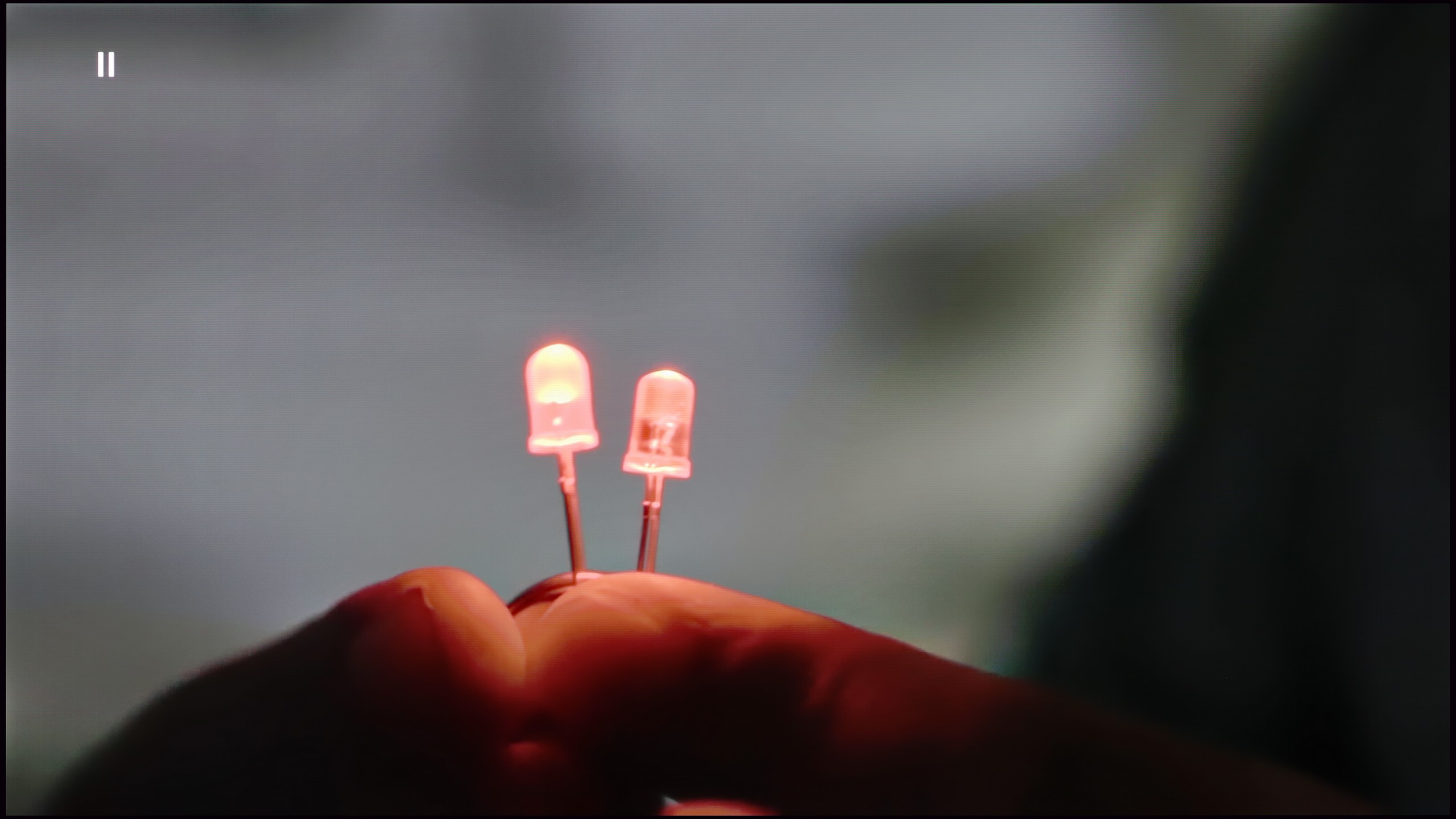
Image without overscan on the SD signal


The Samsung QN95D television handles tonal transitions even in lower quality materials, thanks to the noise reduction feature employed, which functions like a gentle gradation. This feature is extremely effective, smoothing out the image and eliminating unwanted noise while significantly improving the quality of the displayed material. However, as is often the case, too much effectiveness can lead to unintended side effects. In some materials, this feature may also blur elements that should remain sharp, such as film grain.
Despite this, the television performs well in the context of image scaling, eliminating larger jagged edges. In a scene where branches are visible, they are not excessively artificially sharpened, allowing for a natural appearance, and the model does not have an artificial outline. Overall, this means that even in more challenging conditions, the film material presents itself satisfactorily on the Samsung QN95D. The only downside when watching HD/SD content (such as regular terrestrial television) is the fact that we have a slightly cropped image – this is caused by the so-called overscan, which cannot be turned off.
The Samsung S95F offers a noise reduction feature that is responsible for smoothing tonal transitions. It works very effectively, but in practice, it can be overly aggressive. Materials of lower quality – e.g., older recordings or videos from YouTube – become soft and plastic when this feature is activated, resembling an image digitally smoothed in a graphic program. Unfortunately, the natural film grain, which often adds authenticity to the image, disappears in the process. Fortunately, the television does not lose too many fine details, such as in skin textures or elements of the surroundings. Therefore, this feature is best used with discretion – depending on preferences, one can achieve a smooth image that is less natural, or one that is truer to the original. In our opinion, the most universal choice is the “Standard” setting.
The image scaling performs significantly better. The television handles materials of lower resolution well – even content at 576p looks quite decent, although a slight blockiness can be noticed. Overall, the effect is very good, although it somewhat falls short of what Sony Bravia 8 (II) or LG G5 can achieve. It is also worth mentioning a minor imperfection of the S95F – in older materials, overscan may occur, causing a slight trimming of the left edge of the image.
Blur and motion smoothness
7.5/10
8.5/10

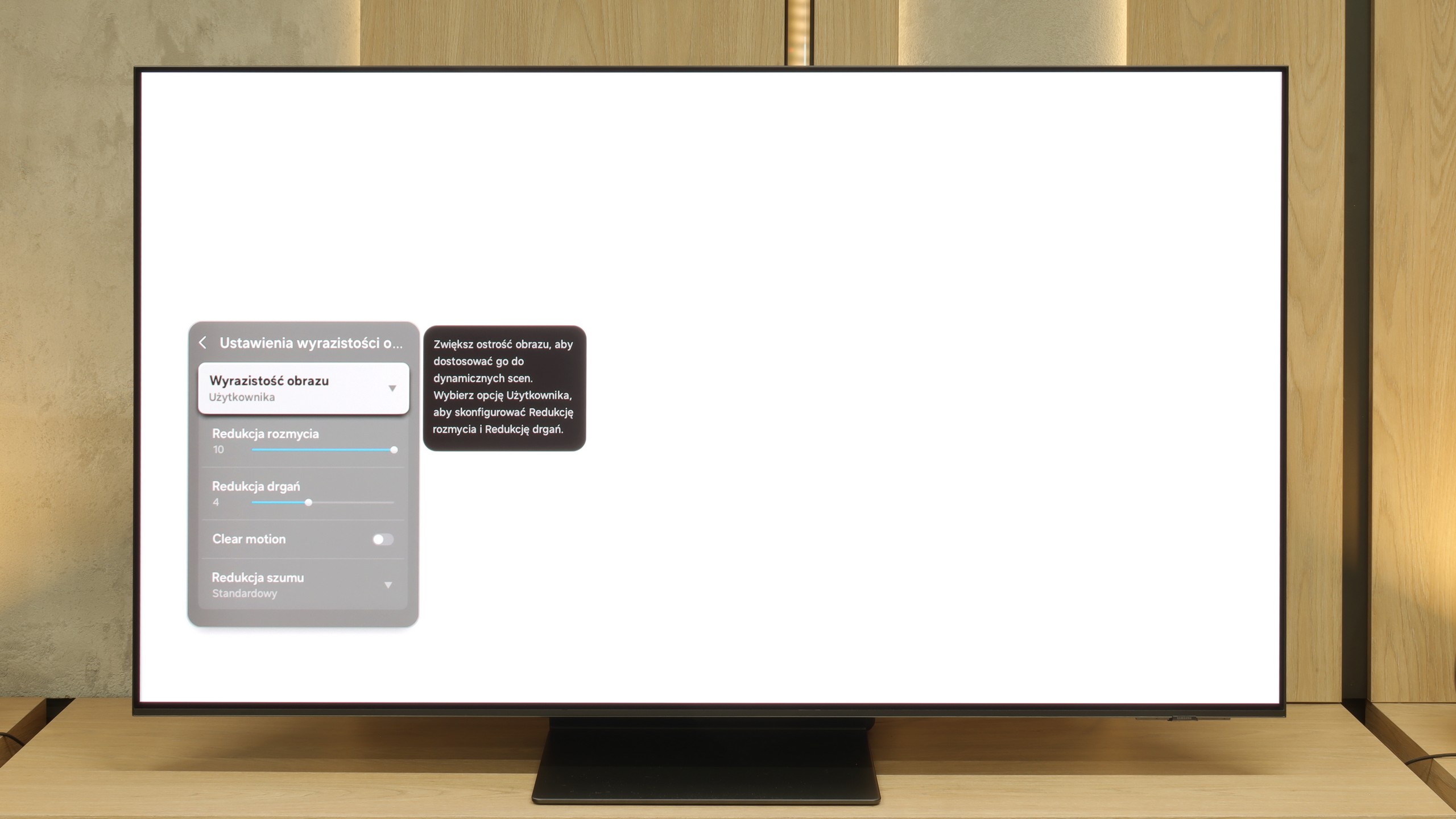
Blur (native resolution, maximum refresh rate):






Blur (BFI function enabled):
Image flickers in this mode



Image flickers in this mode

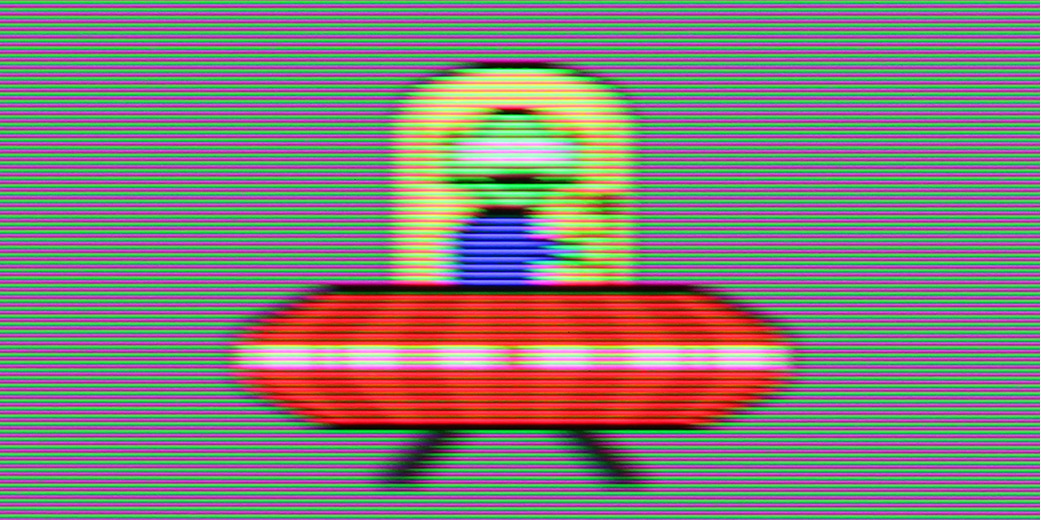

Smużenie ():
Smużenie (4K@165Hz):



The panel in Samsung QN95 performs very well in terms of motion blur and smoothness of movement. With a refresh rate of 120 Hz and features for reducing blur and judder, the picture settings can be customised to personal preferences, whether for watching films or for dynamic sports broadcasts. The user has the option to adjust the smoothness of the image on a 10-point scale – from a more frame-like appearance reminiscent of traditional film to a smooth, almost theatrical effect, which works particularly well for sports transmissions.
The Samsung S95F shows phenomenal performance in terms of motion fluidity. The panel operates at a native resolution of 4K with a refresh rate of up to 165 Hz, and combined with QD-OLED organic technology, it delivers incredible results. Sports and games look stunning – the image is fast, dynamic, and very natural. Additionally, the built-in motion smoother and motion blur reduction system allow you to tailor the character of the picture to your own preferences. You can opt for a more "frame-like" effect with visible film structure or a smooth, theatrical spectacle. Every viewer will find a setting that suits them.
Console compatibility and gaming features
9.5/10
9.6/10
- ALLM
- VRR
- VRR range48 - 144Hz48 - 165Hz
- Dolby Vision Game Mode
- Correct implementation of HGIG
- 1080p@120Hz
- 1440p@120Hz
- 4K@120Hz
- Game bar

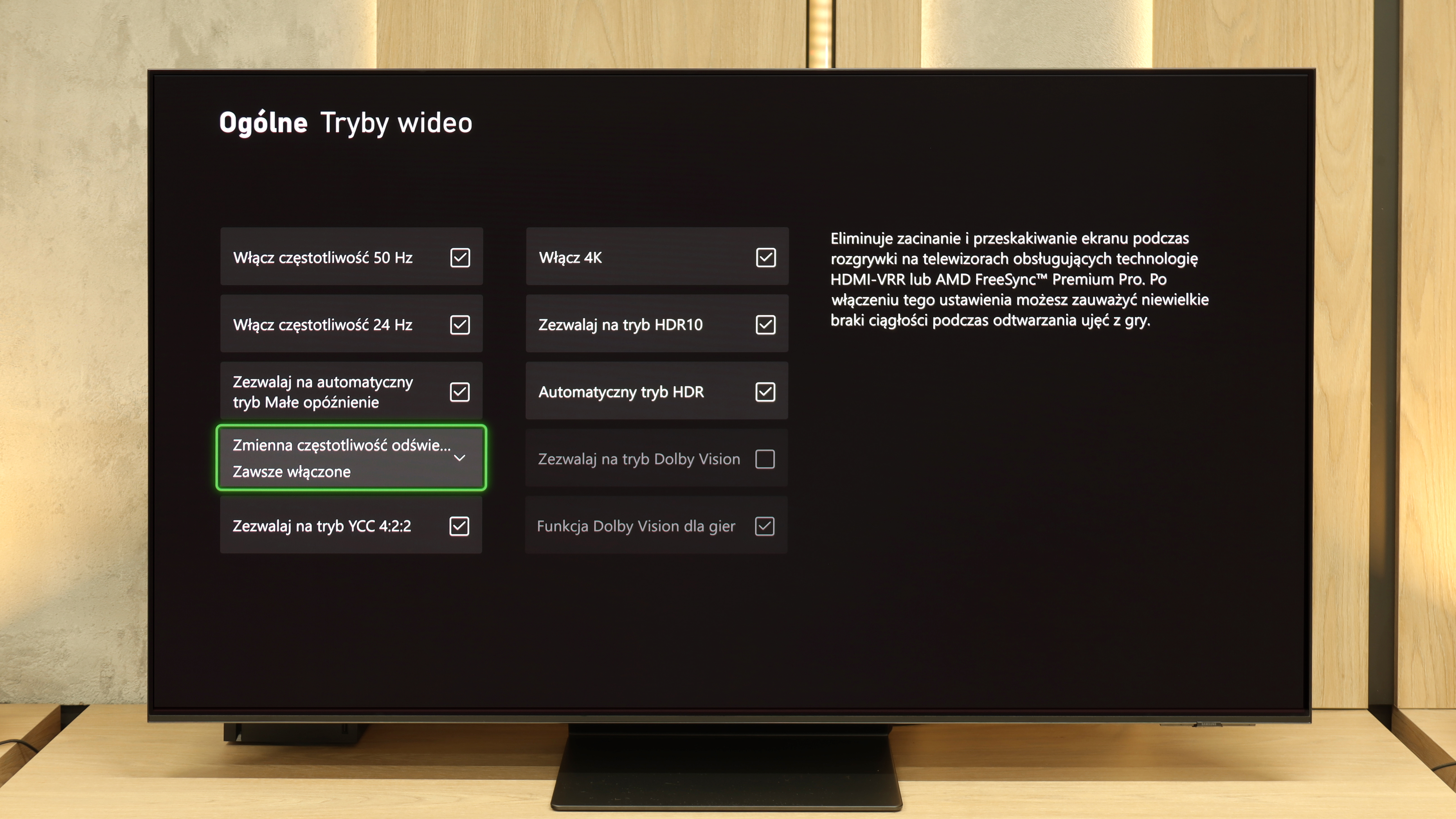

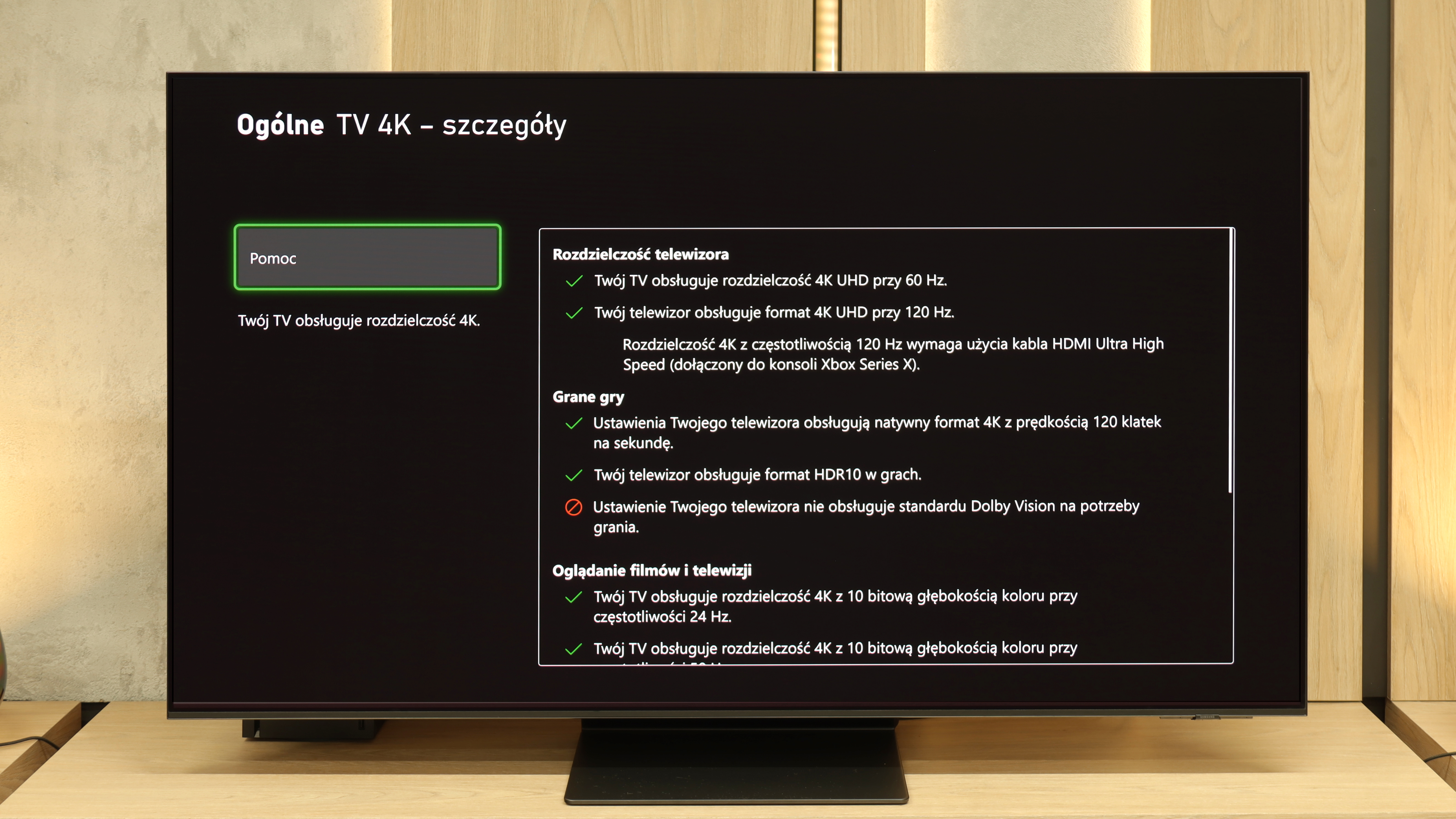

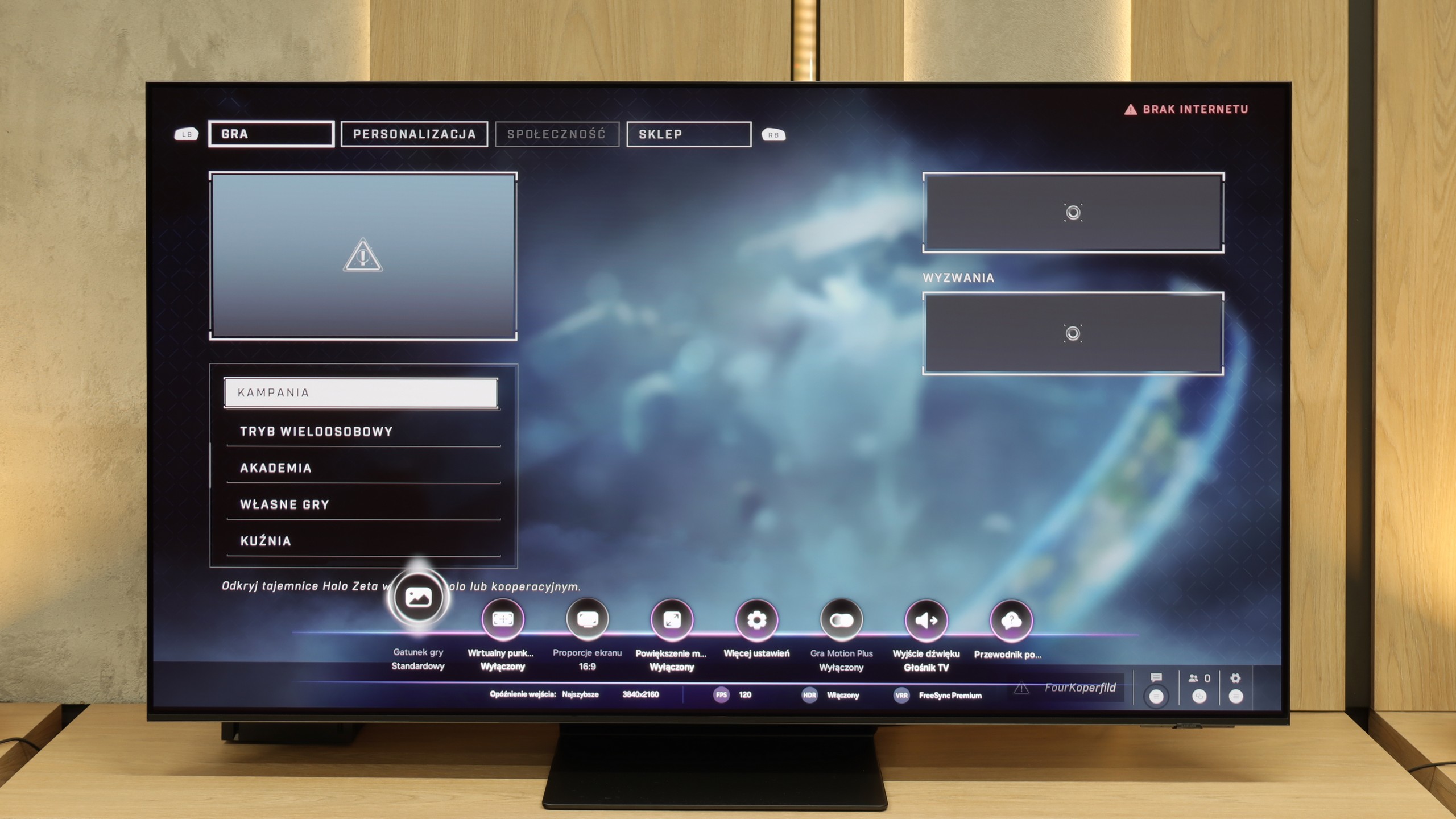

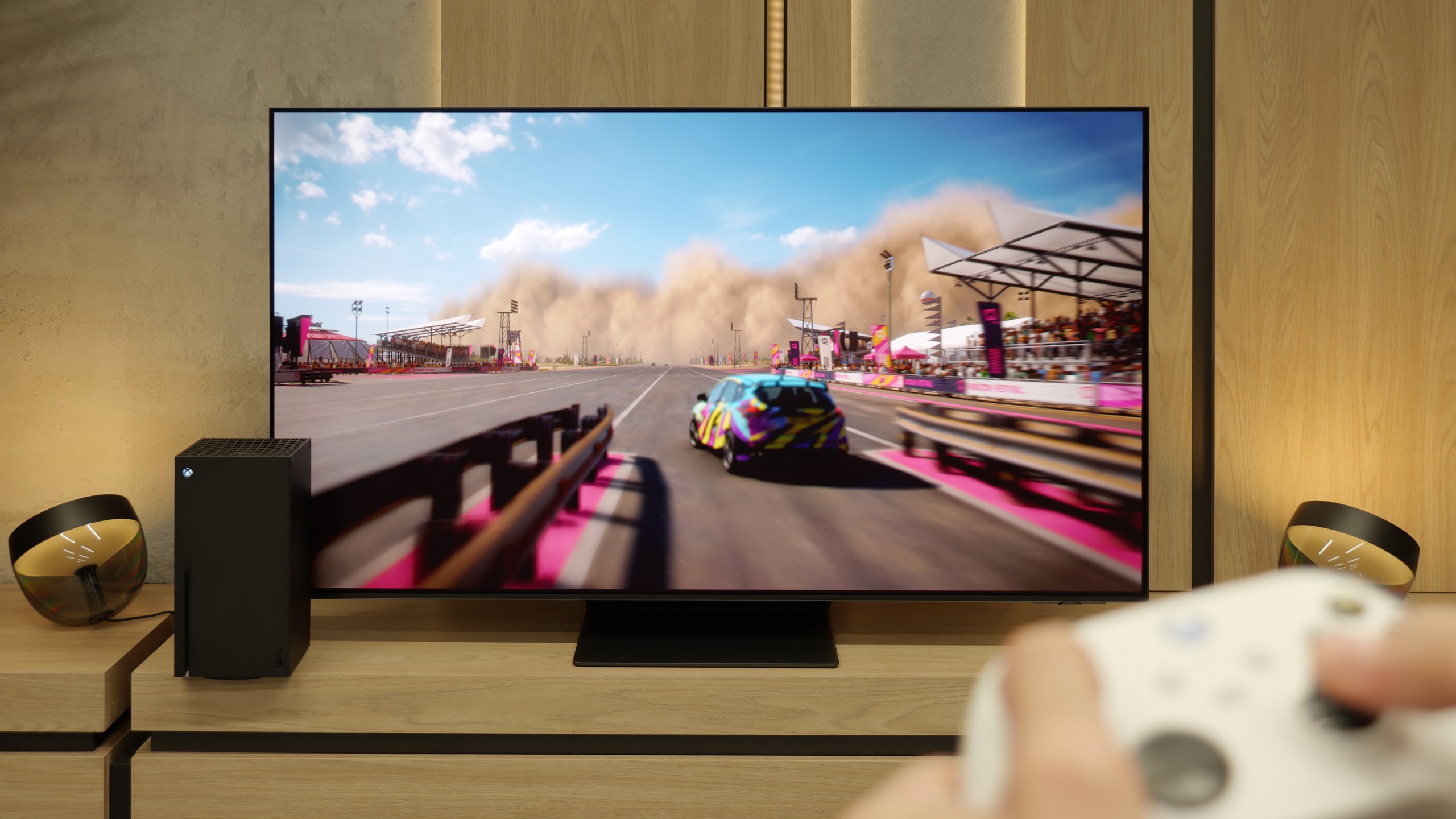
Samsung QN95D offers quite a few features that gamers will appreciate. First and foremost, the television supports variable refresh rate (VRR), which allows for smoother gameplay, eliminating issues with tearing, especially during dynamic scenes. We also find the auto low latency mode (ALLM) feature, which automatically switches the television to low latency mode when it detects a connected console or computer, ensuring more responsive controls.
Furthermore, the QN95D Samsung has a game mode that reduces input lag to a very low level, which is crucial in games where reflexes play an important role. With a high refresh rate of 120 Hz, the picture is exceptionally smooth, significantly enhancing the experience of fast-paced action games and sports productions. The television also supports G-Sync and FreeSync technologies, which further enhance gameplay smoothness and improve user comfort. An interesting addition is the 'Game Bar' – a special menu that provides quick access to all game-related settings, allowing easy adjustments of picture and parameters to suit user preferences without the need to interrupt gameplay.
Although the Samsung QN95D does not support Dolby Vision – which is quite obvious for Samsung televisions – it does offer the HGiG feature, which ensures appropriate picture quality in HDR games, in line with the creators' vision.
The advantages of low motion blur and excellent motion fluidity characteristic of OLED panels are just the beginning, as the Samsung S95F has been designed with gamers in mind. The manufacturer has equipped it with four HDMI 2.1 ports – although limited to a bandwidth of 40 Gb/s, in practice this has no impact on compatibility with consoles or PCs. We get a full suite of gaming features: variable refresh rate (VRR), automatic game mode (ALLM), as well as a very well-implemented HGiG standard, which ensures that HDR titles look exactly as their creators intended. Completing the package is the Game Bar – a clear settings hub where we can preview and change all key image parameters with one motion. The proprietary motion smoother, Game Motion Plus, also deserves commendation, as it can smooth out animations, which is particularly useful in productions running at 60 frames, where stability is not always exemplary. While support for Dolby Vision in games is lacking, it’s hard to view this as a serious drawback – Samsung compensates with other solutions. This is one of the best, if not the best, gaming televisions available on the market today.
Input lag
9.8/10
10/10
SDR
HDR
Dolby Vision
QN95D Samsung stands out with excellent input lag performance, achieving values below 15 ms. This is an impressive result that is not dependent on resolution or refresh rate. With such low latency, gamers can enjoy the TV's instant response to their commands, which is crucial in dynamic games. Whether we are playing 4K titles at 120 Hz or lower resolution games, the QN95D ensures exceptional gameplay smoothness and precise motion rendering. Such a level of responsiveness makes the TV an ideal choice for any avid gamer.
The input lag on the S95F is at a level where it is difficult to even talk about any delay. At 5 ms with 120 Hz content, there is no room for hesitation between pressing the button and the response on the screen. It’s pure immediacy. And if someone is worried about the 60 Hz mode – don't worry, there it’s 10 ms, which still places the television among the absolute best and gives no reasons for complaints.
Compatibility with PC
8.6/10
8.8/10

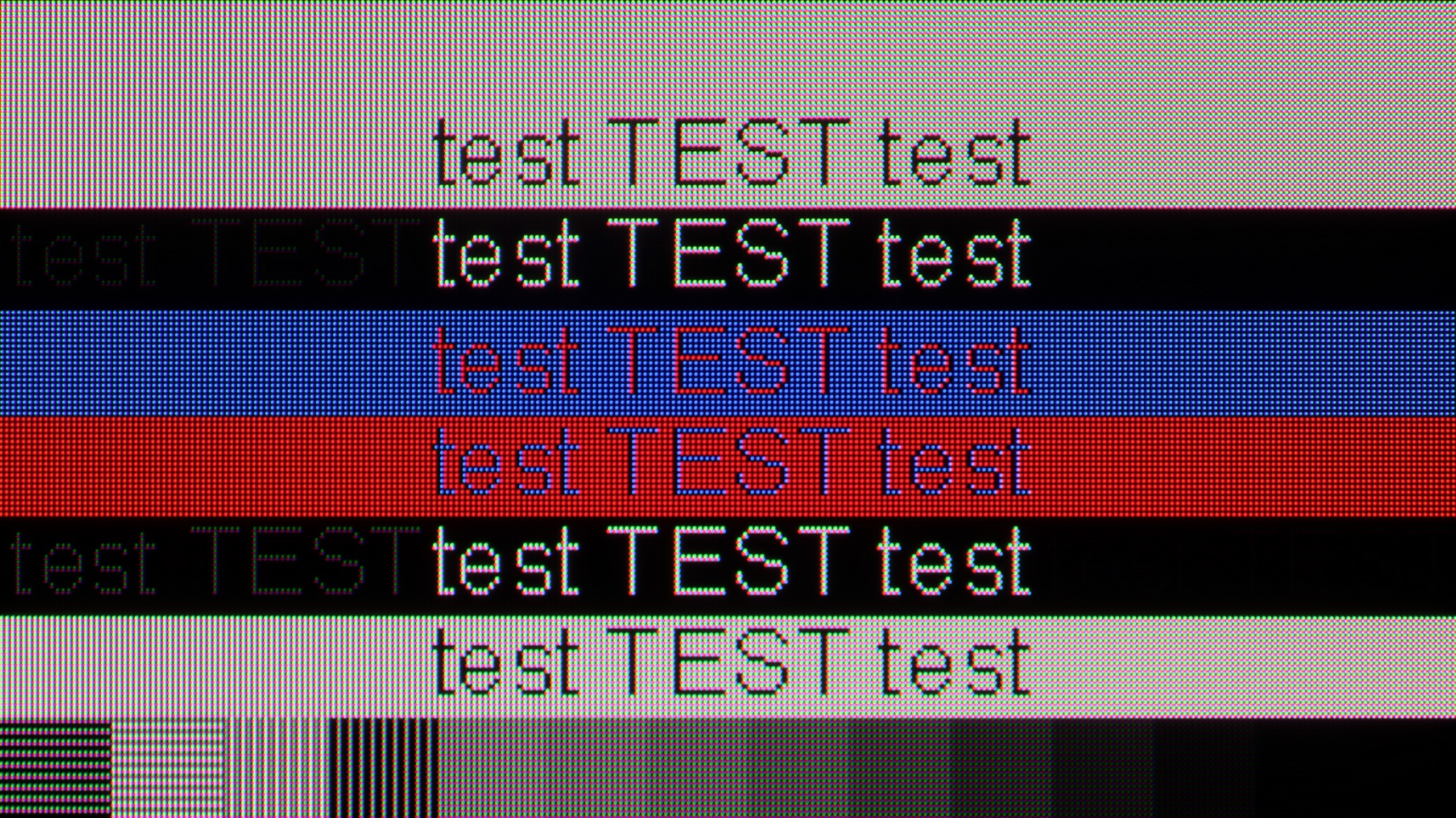
In the category of collaboration with a PC, the Samsung QN95D television stands out with its high performance, offering support for 4:4:4 chroma and impressively low input lag. Thanks to these features, users can enjoy fluidity and responsiveness, making it an ideal choice for office work or everyday applications. However, one noticeable issue is the poor visibility of horizontal lines on a dark background. In the test image on the right, it is evident that the letters resemble vertical lines, which can be somewhat frustrating. Nonetheless, the television generally offers good compatibility with a computer, and users can expect comfortable operation in their daily tasks.
The S95F with a QD-OLED panel is a true magnet for PC gamers. The 165 Hz refresh rate combined with virtually imperceptible input lag and full support for G-Sync and FreeSync means the television performs like a top-tier monitor. Dynamic action games, shooters, and racing titles gain the smoothness and responsiveness that are hard to find in competing models. When working with text, a subtle rainbow halo can be seen around the letters, characteristic of the pixel structure of QD-OLED, but with proper handling of chroma 4:4:4, everything remains readable and does not interfere with everyday use.
Viewing angles
7.1/10
9.8/10
In the case of TVs with VA panels, one can usually expect limited viewing angles; however, QN95D Samsung surprises in this category. Thanks to the applied coating that widens viewing angles, the TV offers really good performance, which is rarely seen in devices with this type of panel. Although VA panels are usually not the best in this regard, in this model, the picture remains clear and vivid even when viewed from the side, making it an excellent choice for larger rooms and group watching.
The Samsung S95F with a QD-OLED panel currently offers some of the best viewing angles on the market. Whether we are sitting directly in front or to the side of the sofa, the image remains consistent – colours do not lose intensity and contrast does not deteriorate. It is a screen where it is hard to find a weak point in this category.
TV efficiency during daytime
6.5/10
7.1/10

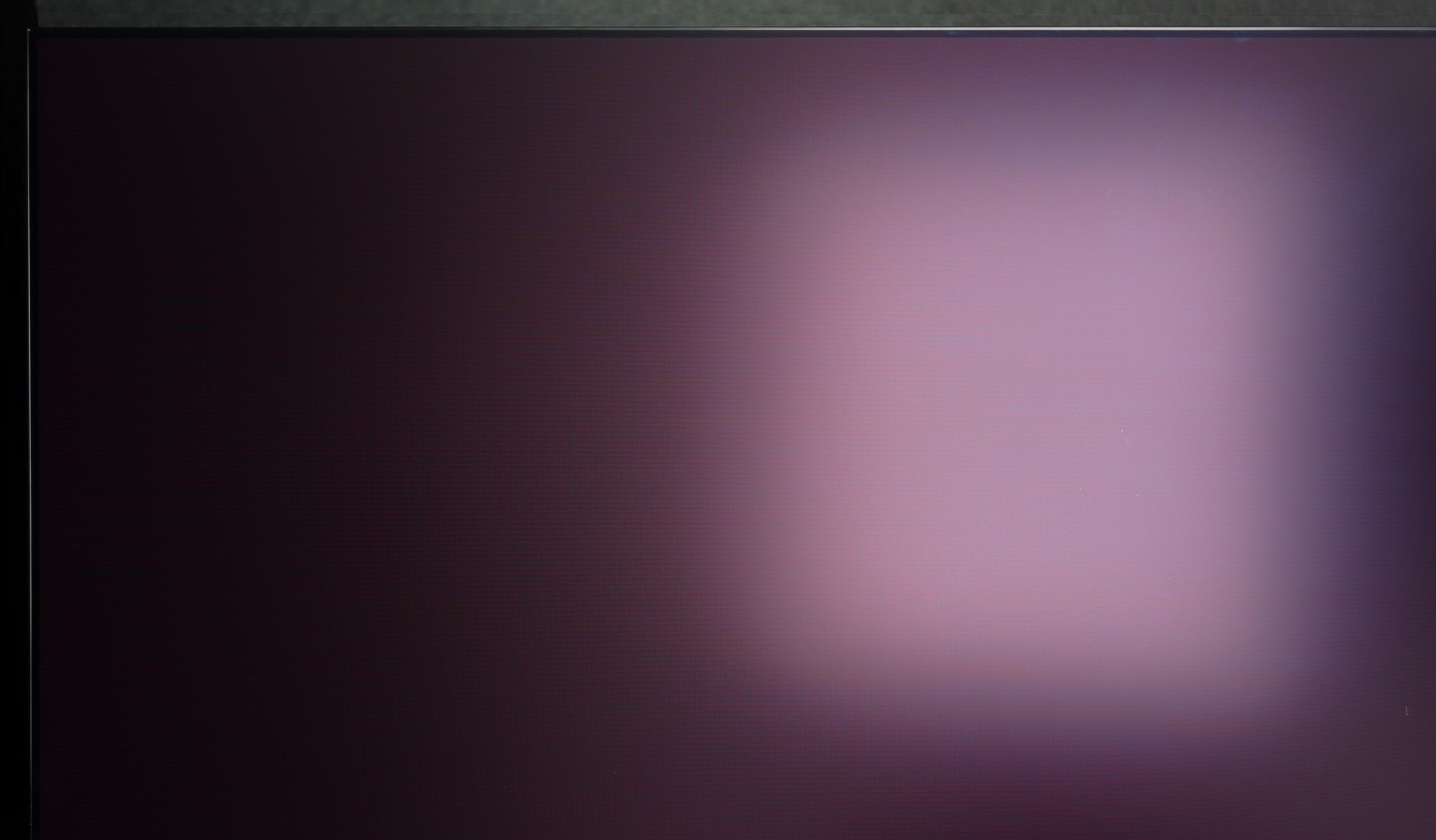


Matrix brightness
Average luminance SDR
SAMSUNG OLED S95F (QD-OLED): 671 cd/m2
Samsung Neo QLED QN95D: 655 cd/m2
In the daytime performance category, QN95D Samsung, despite using a glossy panel, may struggle with highly visible reflections on the screen. As seen in the photo on the right, the lamp disperses to the left and right, which is a result of the anti-reflective coating used. However, overall this coating performs very well when the television displays any colours other than black, where reflections become more noticeable. It is worth noting that the television achieves very high brightness for SDR content, exceeding 650 nits, which provides comfortable viewing even in bright rooms.
One of the biggest distinguishing features of the Samsung S95F compared to its competitors is the matte screen coating. This solution excels in reducing reflections and glare – the image remains clear even in a brightly lit living room. However, it is important to remember that the characteristics of the QD-OLED matrix come with a certain compromise. Under intense light, the black can brighten, taking on a shade of cherry black, which affects the saturation of colours. On the other hand, the brightness of the panel, reaching around 700 nits in SDR mode, is fully sufficient for the television to perform flawlessly in typical daytime conditions.
Details about the matrix
Subpixel Structure:

Panel uniformity and thermal imaging:


Samsung Neo QLED QN95D
SAMSUNG OLED S95F (QD-OLED)
TV features
6.7/10
7.9/10
- HDMI inputs0 x HDMI 2.0, 4 x HDMI 2.1 48Gbps0 x HDMI 2.0, 4 x HDMI 2.1 40Gbps
- OutputsToslink (Optical audio), eARC (HDMI), ARC (HDMI)Toslink (Optical audio), eARC (HDMI), ARC (HDMI)
- Network InterfacesWi-Fi 2.4GHz, Wi-Fi 5GHz, Ethernet (LAN) 100MbpsWi-Fi 2.4GHz, Wi-Fi 5GHz, Ethernet (LAN) 100Mbps
- TV receptionDVB-T, DVB-T2, DVB-S, DVB-S2, DVB-CDVB-T, DVB-T2, DVB-S, DVB-S2, DVB-C
Classic features:
- Recording to USB (terrestrial TV)
- Recording programming
- Picture in Picture (PiP)
- RF remote control (no need to aim at the screen)
- Backlit remote control
- Teletext
- Audio only mode
- Bluetooth headphones support
- Simultaneous Bluetooth headphones & TV audio
Smart features:
- AirPlay
- Screen mirroring (Windows Miracast)
- Voice search
- Voice search in native language
- Ability to connect a keyboard and mouse


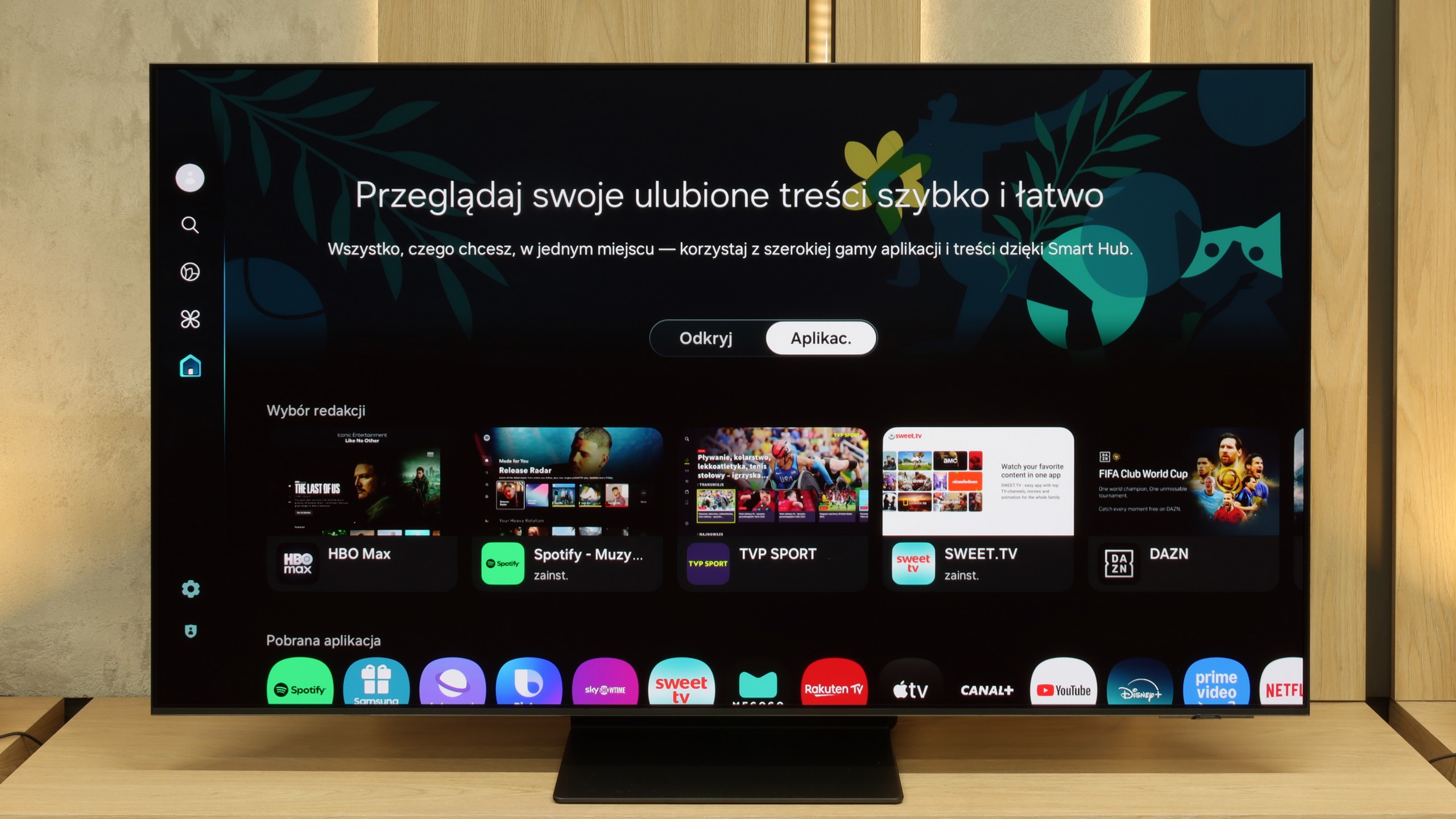
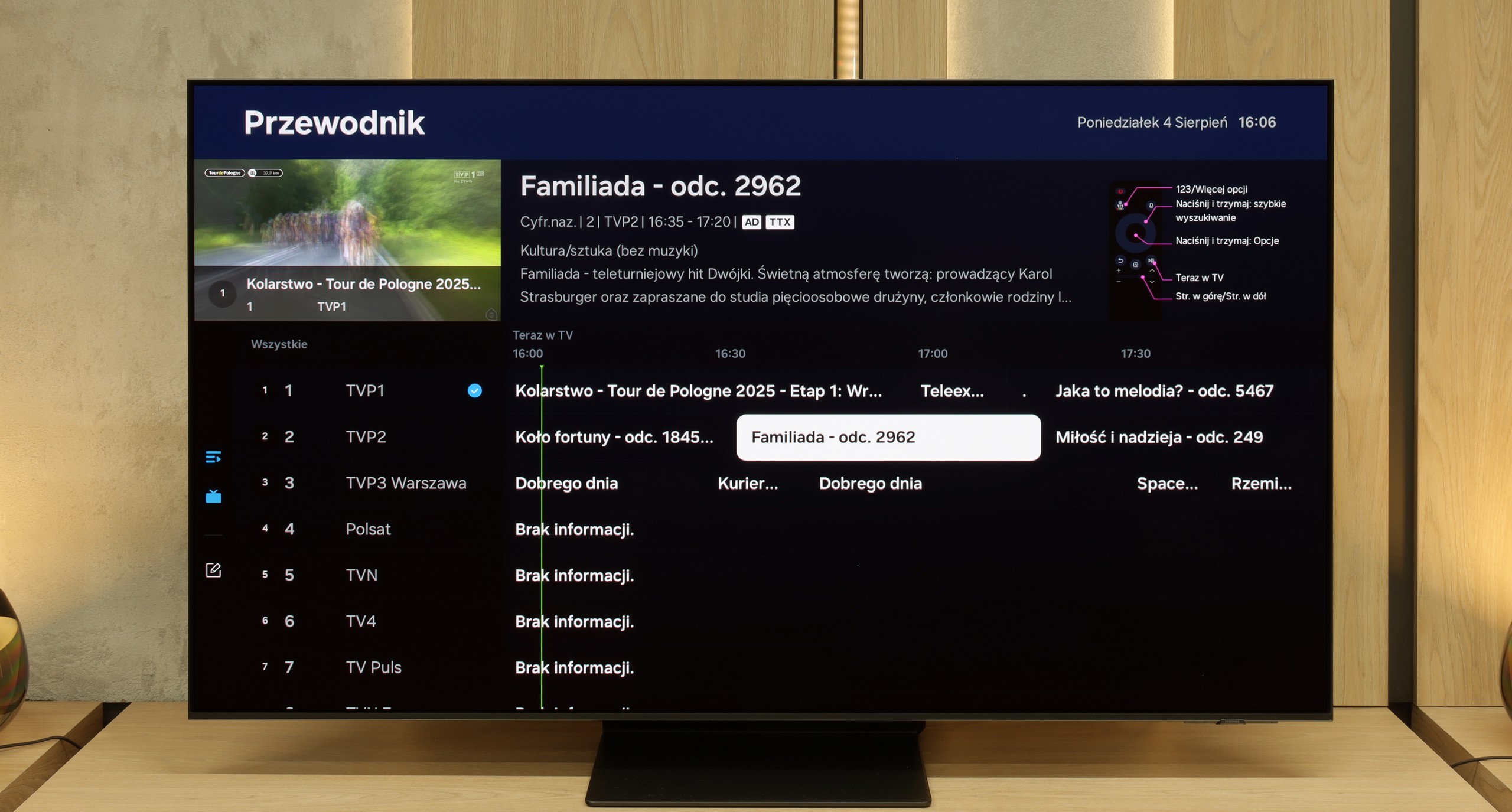
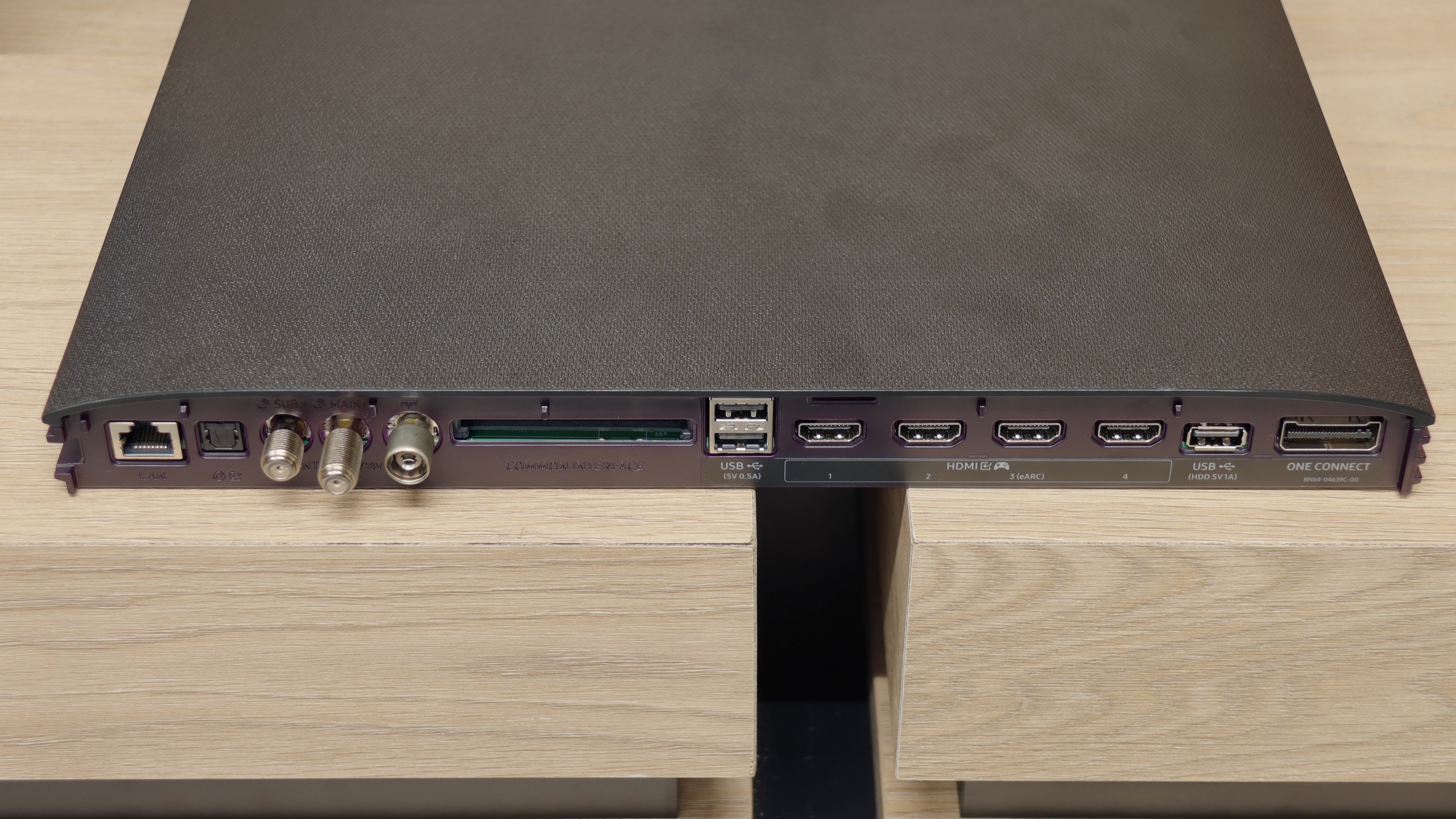
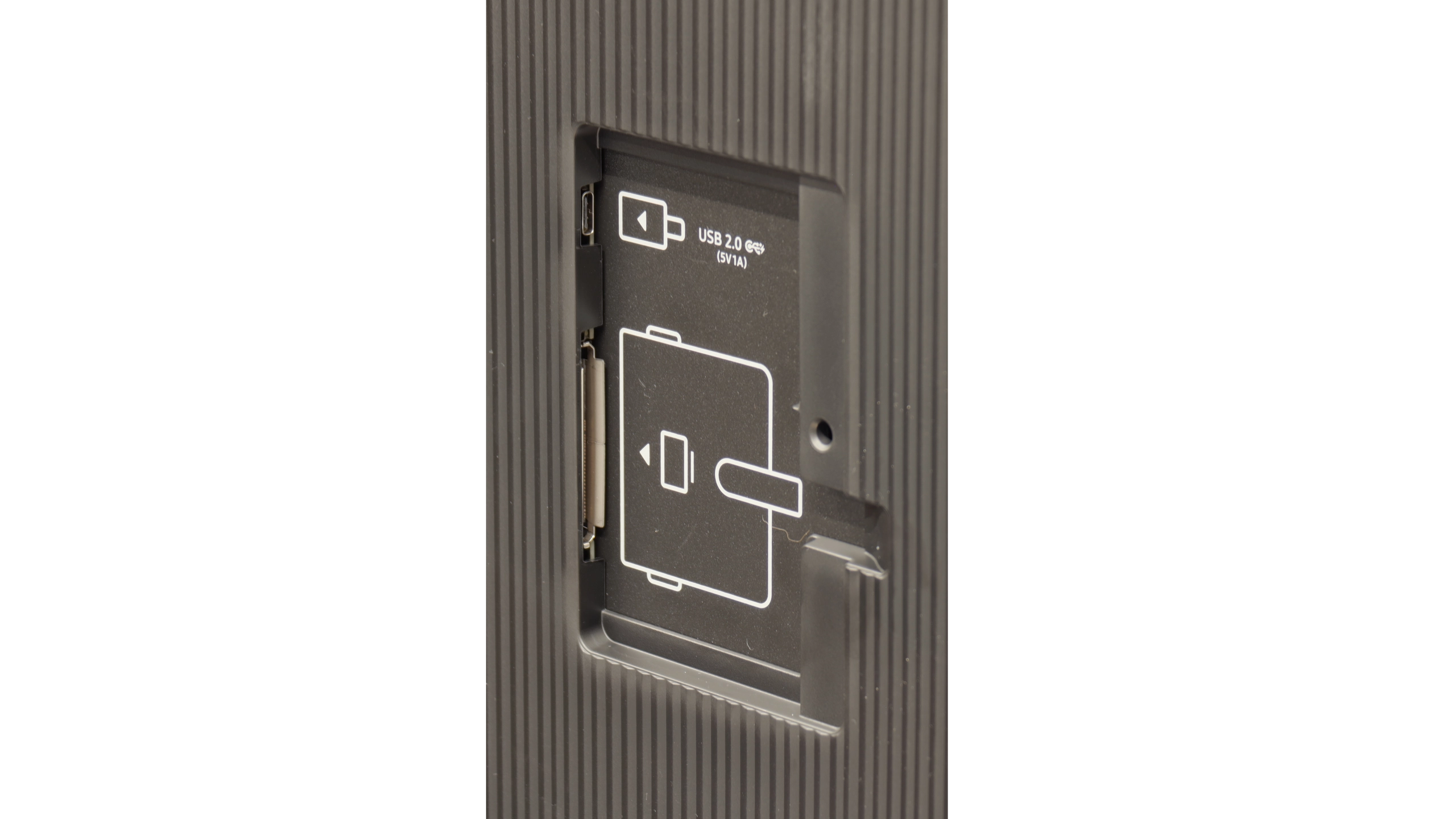
The Tizen system in Samsung televisions is characterised by simplicity and speed of operation. The central point of the interface is the "Smart Hub," which allows for quick access to the most important applications and recommended content, such as Netflix, YouTube, and Prime Video. Tizen also supports the Multi View function, allowing for simultaneous viewing of several image sources. Integration with AirPlay enables easy content sharing from Apple devices, and there is voice control in Polish. Users can control the television, search for content, and perform other operations using voice commands, which significantly facilitates the daily use of the device. One of the most distinctive elements of Samsung QN95D is the included Slim Fit camera, which offers functionality that goes beyond the standards of other models currently on the market. Thanks to the applied "POGO" connector, the camera can be easily connected directly to the television. It allows for video calls and personal training functions using the camera. This innovative approach opens up new possibilities for users in terms of interaction with the television.
It is also worth mentioning the solar remote control, which is an eco-friendly solution—it does not require battery replacement as it charges using solar energy. This remote is also universal, allowing control of other devices, such as the Canal+ decoder, without the need for additional remotes. This is a significant convenience that enhances user comfort. Features dedicated to users of traditional television include picture-in-picture (PIP), allowing for the simultaneous viewing of two programmes. However, the lack of recording functionality may be a disappointment, as this could be a drawback for some users.
SmartTV in S95F: Tizen
Against the competition, the Samsung S95F not only shines with its picture quality but also demonstrates that smart features can be truly well thought out. Tizen operates very quickly, does not freeze, and gives the impression that everything is at hand – from AirPlay to simple voice search that works even when the remote control is misplaced. Admittedly, the system is not as open as Android, but frankly, very few will feel its shortcomings – there are plenty of applications, and additional features like integration with SmartThings only enhance the sense of completeness.
Classic Features of the S95F
Interestingly, Samsung reminds us that a television is still a television. Therefore, alongside modern gadgets, we also find the classics – PiP, teletext, or the option to pair headphones via Bluetooth. There is no recording to USB from DVB-T/T2 tuners, but instead, we get a remote control that can also manage the Canal+ decoder and other devices in the living room. And the cherry on top is the One Connect module – all connections in a separate box, making connecting equipment no longer an extreme sport.
Playing files from USB
9.1/10
9/10
Supported photo formats:
Maximum photo resolution:

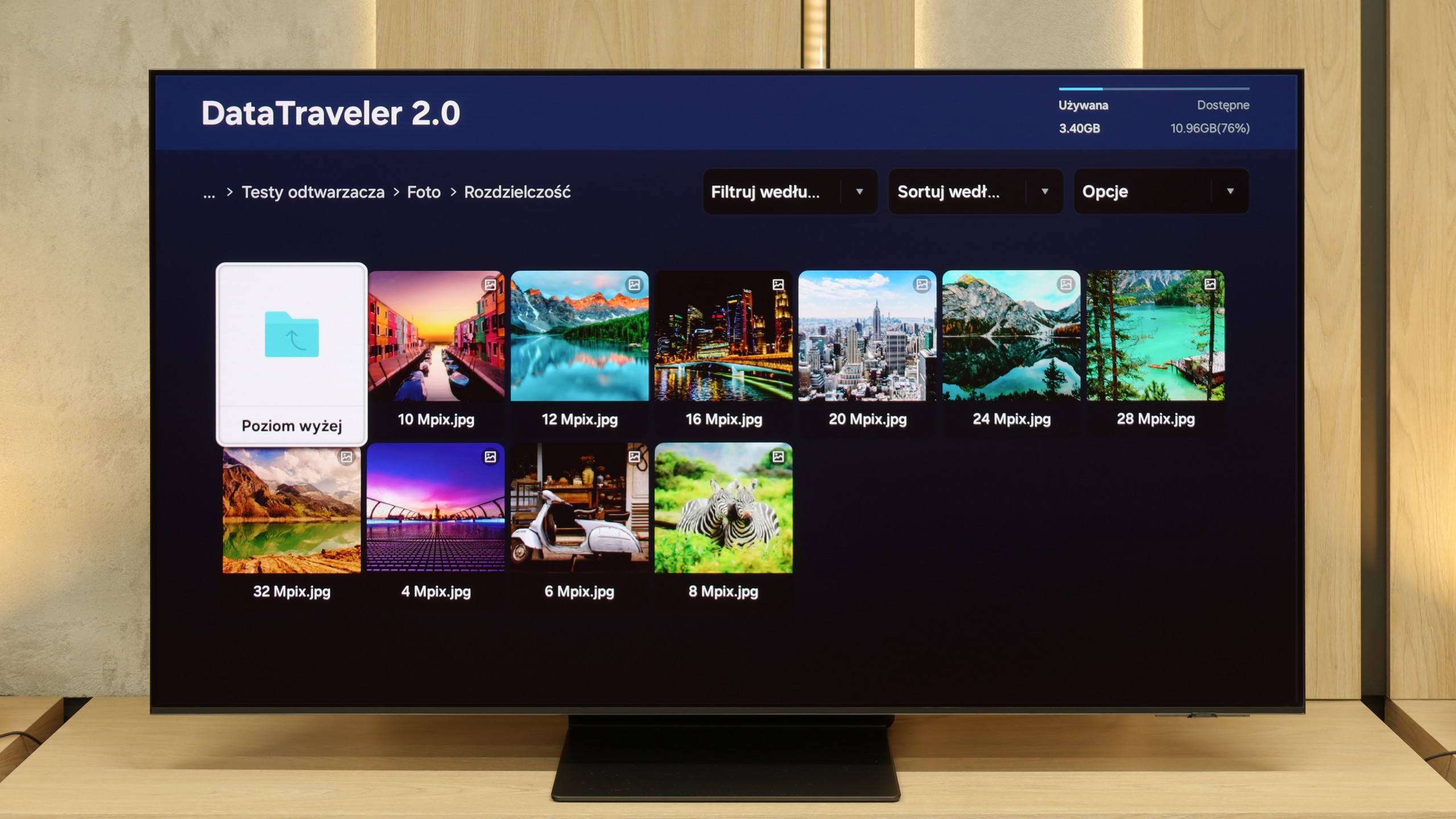
The built-in player in the Samsung QN95D television is undoubtedly one of its stronger points. It handles almost all video and audio file formats that we tested exceptionally well. The exception is the lack of support for Dolby Vision, which aligns with Samsung's policy, and less popular codecs. A significant advantage is the support for Polish characters in subtitles and the ability to customise font colours, which greatly improves the comfort of watching content with subtitles. A downside may be the limited support for photo formats – the television mainly supports JPEG, and there is a lack of support for more advanced formats such as PNG or Apple HEIC.
The built-in player in the S95F does a decent job – films and music start up without any problems, so it is completely sufficient for everyday use. The trouble begins only when we expect full compatibility with what the manufacturer claims. Not all image formats work, and HEIC files simply refuse to cooperate. However, for most people this will not be an obstacle – for basic applications, such a player performs flawlessly.
Apps
9.1/10
8.7/10














































Sound
7/10
8/10
- Maximum volume-82dB
- Dolby Digital Plus 7.1
- Dolby True HD 7.1
- Dolby Atmos in Dolby Digital Plus (JOC)
- Dolby Atmos in Dolby True HD
- DTS:X in DTS-HD MA
- DTS-HD Master Audio
The sound in Samsung QN95D is at a very good level thanks to the 4.2.2 system with a power of 70W. It provides clear, crisp audio, and the bass is well-balanced, which works well both for watching films and gaming. The support for Dolby Atmos adds a spatial effect, allowing for a fuller audio experience. However, there is a lack of support for DTS, which is a typical feature for Samsung TVs, but it may be a downside for those attached to that format. Overall, the sound performs very well and should meet the needs of most users.
The built-in speakers of the S95F can be pleasantly surprising – they sound enjoyable and clear, and despite the slim design of the television, it’s hard to say that the sound is flat. Admittedly, the bass could be stronger, but that's a natural compromise given such a thin casing. For everyday watching of films or series, the set performs excellently. Those who prefer stronger experiences should consider a soundbar – preferably one with Q-Symphony support. Then, the television speakers and the Samsung soundbar work together.
Acoustic Measurements
No acoustic data
82dBC (Max)
75dBC
